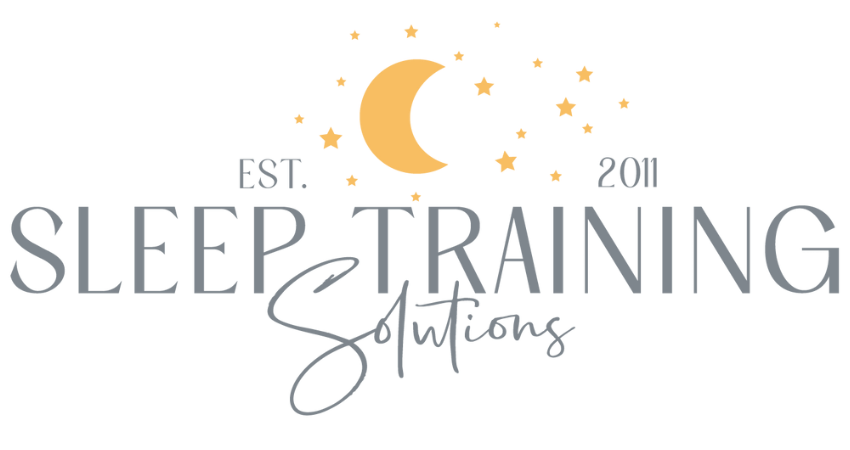Is Your Home Sabotaging Your Child’s Sleep? Simple Fixes That Work
Fix the Home Factors That Disrupt Your Child’s Sleep
We spend so much time trying to fix sleep problems by looking at the child—their nap schedule, their bedtime, their sleep associations. But what if the issue isn’t just them? What if the atmosphere in your home is playing a bigger role than you realize?
Your child is like a sponge, absorbing not only the light and noise around them but also the “energy” of the home. Let’s dig into how your home environment could be sabotaging sleep without you even realizing it—and what you can do to create a space that supports rest, not resistance!
The Hidden Noise That Wakes Your Child
We all know loud sounds can wake a baby, but what about persistent, low-level noise? A dishwasher humming, a TV playing in the background, phones pinging, or even distant traffic can disrupt sleep cycles without fully waking a child. Or what about the noises we’re so used to (the garage door opening or the annoying buzz when the washer cycle is finished)?
Easy solution: Try a short, guided sound audit. Sit quietly in your child's room for 10 minutes around naptime and again around bedtime. Notice every sound. Then remove or muffle what you can (close vents, shift electronics, move noisy clocks, address clicking in the ceiling fan). You’d be amazed at what’s contributing to sleep fragmentation.
Also check for moving shadows—if your child has a ceiling fan and a nightlight, shadows might be dancing across the walls or ceiling. These can feel scary or confusing. Try adjusting where the nightlight is plugged in, swap it for a dimmer option, or skip it entirely if it's not needed.
Emotional Atmosphere: Is Your Stress Contagious?
Even if you’re doing everything "right" with schedules and routines, your child can still struggle to settle if the emotional energy at bedtime is tense. Kids are highly attuned to the mood in the home—especially in the hour before bed. If you're rushing, snapping, or multitasking, your child picks up on that stress.
They don’t need to understand it to feel it.
👉 Signs Your Stress Might Be Affecting Their Sleep:
They resist even starting the bedtime routine
They're clingier or more dysregulated at night
They suddenly "need" things they didn’t before—more snacks, more hugs, one more story
They fall asleep late even if they're tired
Try this:
Make a ritual for yourself before bedtime, even if it's just a 30-second pause. Put your phone down and silence notifications, take 3 deep breaths and visualize what calmness in this moment looks like.
Cut the multitasking—even folding laundry while overseeing bedtime can make you less present. Try doing nothing else during the 20–30 minutes of the routine. It tells your child: “This moment matters.”
Have a feeling you’re not your best parenting self around bedtime? Do a tone check. Record yourself for one evening (just your voice on your phone). Later, listen for your volume, tone, and pace. You’ll hear what your child is experiencing—and know exactly what to tweak.
Is bedtime stressful because you just don’t like the routine? Check out 9 Easy tips to enjoy your child's bedtime routine more for tips!
Is there tension with your spouse because of the current sleep deprivation situation at your house? Check out Tired and Fighting? How Baby Sleep Issues Can Damage Your Marriage
Sibling Sleep Sabotage (It’s Real!)
One child is doing everything right. The other is bouncing off the walls. Guess who doesn’t fall asleep on time?
When one sibling is dysregulated, the whole house can feel off-kilter.
Creative fixes:
If one child is wound up, give them a “helper” job in the bedtime routine (carrying the pajamas, picking the story, etc.). It brings them into calm with a sense of purpose instead of reprimands.
Designate a post-bedtime "quiet zone" for older siblings with calming activities they don’t get access to any other time (think: headlamp and drawing pad, special puzzle, silent audiobook). The exclusivity makes it special. The calm keeps everyone on track.
Clutter = Cortisol
Your child’s room might be full of fun colors and favorite toys—but if it feels busy or cluttered, it could actually be making it harder for them to rest.
Kids (and adults) sleep best in spaces that feel calm, not chaotic. That laundry pile on the chair? The shelves packed with toys? Even if they’re not playing with it, their brain still registers it as “something to do,” not “time to wind down.”
Visual clutter = mental clutter. When there’s too much to take in, the brain stays alert instead of relaxing—and that can make it harder to fall or stay asleep. Studies show that messy spaces boost cortisol (the stress hormone) in both kids and adults. That laundry pile on the chair? It might seem harmless, but to your child’s brain, it’s a subtle reminder that the day isn’t done yet.
What to try: Simplify the visual field.
Rotate toys and books out of sight. This toy organizer isn’t expensive and a great piece to keep toys out of sight in the bedroom with the 3 sizes of cute storage bins that are included. Or if your little one is in a bed and it’s too tempting to get out and pull out a toy, you may need to store them in the closet.
Stick to muted tones for bedding, accent pieces and wall color. Wondering if the color of the bedroom is helping sleep? Check out this post: What Color Should I Paint My Child’s Bedroom for More Peaceful Sleep? It’s not about making it boring or minimalist—it’s about making it restful and reducing “visual to-dos” that keep the brain on alert.
Don't Underestimate Smell & Texture
That scented candle you love? It might be overpowering your little one. That scratchy tag in their pajamas? Keeping them just annoyed enough to prevent them from getting comfortable enough to easily fall asleep.
Audit the senses:
Smell: use natural scents sparingly or not at all.
Touch: wash bedding, loveys and PJs with fragrance-free, non-toxic detergent. Check for any scratchy tags.
Comfort: add a soft rug or blanket near the sleep space for a cozy association. If your child is over a year, offer a soft lovey to cuddle with in bed. (This one is my FAVORITE! It is the softest blanket I’ve ever felt - my son had two of them 😉)
These small tweaks make a big difference for kids who are sensitive to their environments—and most are, even if they can't verbalize it.
The Energy Audit (Yes, It’s a Thing)
What happens in the hour leading up to bedtime in your house?
Is it noisy? Are lights blaring? Is someone always looking for their phone or yelling upstairs?
Make a list: Observe your home between 6–8pm (or your bedtime window). What feels chaotic? What can be softened? Replaced? Removed? Sometimes a single swap (like lamp light instead of overhead) creates a huge shift.
Now, don’t mistake “good energy” with dimming the lights, playing lullabies, and trying to get your little one drowsy with the atmosphere. I always recommend that kids go into their crib awake—not drowsy!
This is about shifting the overall mood—not inducing sleepiness, but creating predictability and calm.
Final Thought: You Don’t Have to Be Perfect
None of this is about creating a Pinterest-perfect home. It's about curating one zone or one part of the evening that sends the message: it's safe to slow down here. You don’t need a new house. You don’t need fancy tools. You just need small, intentional shifts.
Creating a calm, soothing atmosphere might be the missing piece in your sleep puzzle.
And if you're doing all this and sleep is still tricky? It might be time to schedule a sleep evaluation call. Because sometimes the issue isn’t just the sleep environment—it’s a pattern that needs a plan.
Need help figuring out what's throwing off your child's sleep? Let's get to the root of it together. Schedule your evaluation call here.
There are so many pieces to successfully sleep training - Download your free PDF and get weekly sleep tips to help set you up for success!
How to Create a Sleep-Friendly Home for Your Baby or Toddler
Related Posts:
This post is for informational purposes only and may not be the best fit for you, your child and/or your personal situation. It shall not be construed as medical advice. The information and education provided here is not intended or implied to supplement or replace professional medical treatment, advice, and/or diagnosis. Always check with your child’s physician or medical professional before trying or implementing any information read here.
Sleep Training Solutions is a participant in the Amazon Services LLC Associates Program, an affiliate advertising program designed to provide a means for sites to earn advertising fees by advertising and linking to Amazon.com and affiliated websites. I will earn a small commission, at no additional cost to you, if you purchase them.






